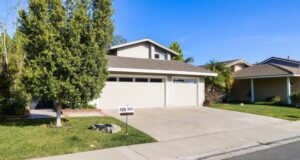Housing and Urban Development and Census Bureau Expand Access to Detailed Information on Nation’s Housing
WASHINGTON, D.C. – January 03, 2012 – (RealEstateRama) — Nearly 20 percent of recent movers identified “convenience to job” as the most important factor in their choice of neighborhood in 2011, according to the American Housing Survey, the definitive source of information on the quality of housing in the United States. For the first time ever, the U.S. Census Bureau and the U.S. Department of Housing and Urban Development have made survey results available on the Census Bureau’s American FactFinder data access tool.
A wide range of specific topics is covered in the survey, including plumbing and source of water and sewage disposal; housing problems; householder’s satisfaction with home and neighborhood; value, purchase price and type of mortgage; recent home improvement activity and costs; safety features and potential health hazards; features in home providing accessibility to people with disabilities; and socio-economic characteristics of the householder. Statistics are national-level only and are provided for apartments, single-family homes, manufactured housing, new construction and vacant housing units.
Topics new to the housing survey include safety features, potential health hazards and features providing accessibility to people with disabilities. Among the accessibility features in occupied homes were floors with no steps between rooms (64 percent of homes have this feature), entry level bathrooms (48 percent), entry level bedrooms (36 percent) and handles or levers on sinks (28 percent). The least common accessibility features were elevators (found in 0.2 percent of homes), ramps (1 percent), handrails or grab bars (excluding steps) in nonbathroom areas (2 percent), raised toilets (7 percent) and built-in shower seats (8 percent).
Other highlights on the nation’s 115 million occupied homes:
The median year these homes were built was 1974, with owner-occupied units being slightly newer (1976 compared with 1972 for renter-occupied).
The median size of single-family detached and mobile home units is 1,800 square feet, with owner-occupied units being larger (1,800 square feet) than renter-occupied ones (1,300 square feet). Newly constructed units are also usually larger, with a median size of 2,200 square feet.
Most homes have three or more bedrooms (64 percent). New homes (those built in the last four years) generally have more bedrooms, with 74 percent of them having three or more.
About half the homes (52 percent) have two or more bathrooms. Again, new units have more bathrooms, with 83 percent of them having two or more.
More than eight in 10 units have a washing machine (83 percent) and clothes dryer (81 percent).
About two-thirds of the units (66 percent) have central air-conditioning and another 22 percent have window units – new units are more likely to have central air-conditioning (87 percent).
The most common Energy Star-rated appliances found in housing units are refrigerators (35 percent), washing machines (30 percent) and dishwashers (22 percent). Energy Star refers to an international energy efficiency rating.
About seven in 10 respondents (71 percent) rate their homes highly (ratings of eight to 10) with 29 percent giving them the “best” rating of 10. Residents of new construction tend to rate their homes even more highly with 84 percent giving them a rating between eight and 10 and 46 percent rating them as a 10.
Recent movers were also asked how they found their current units. The most common methods for home owners were talking with a real estate agent (20 percent), Realtor.com (17 percent) and word of mouth (16 percent). For renters, the most common ways included word of mouth (34 percent), sign on the outside of the building (11 percent) and Craigslist (11 percent).
On average, households pay $927 per month, or 24 percent of their household income, for housing. The cost is higher for residents of new construction, with median cost being $1,340 per month or 24 percent of household income. Renters generally pay less in housing cost ($845 versus $1,008 for owners per month), but they usually pay a higher percentage of their household income (31 percent versus 20 percent for owners).
More than a fifth (21 percent) of all primary mortgage holders reported a change in their monthly payment in the last 12 months. The main reason for their payment change was because of a change in property taxes or homeowners insurance (71 percent).
Twelve percent of households reported a smoker living in the unit.
Sixteen percent of units reported having a swimming pool.
Mold was reported in 4 percent of housing units. Respondents most commonly reported mold sighting in their bathrooms (45 percent), bedrooms (22 percent) and basements (20 percent).
In 2011, owners spent a median of $33 on routine maintenance.
Of the 43,740 owned homes in which a home improvement had been made in the last two years, 35 percent replaced or added an appliance or some type of major equipment, 19 percent replaced or added plumbing fixtures and 17 percent replaced or added a heating and air-conditioning system.
The cost of an average kitchen remodel was $5,000. Adding or renovating a kitchen, however, was much more expensive ($27,353). The average bathroom cost $2,432 to remodel, with renovations or additions costing an average of $3,422.
In October, national summary tables and microdata files from the 2011 American Housing Survey were released.
Contact:
Robert Bernstein
Public Information Office
301-763-3030/3762 (fax)
















